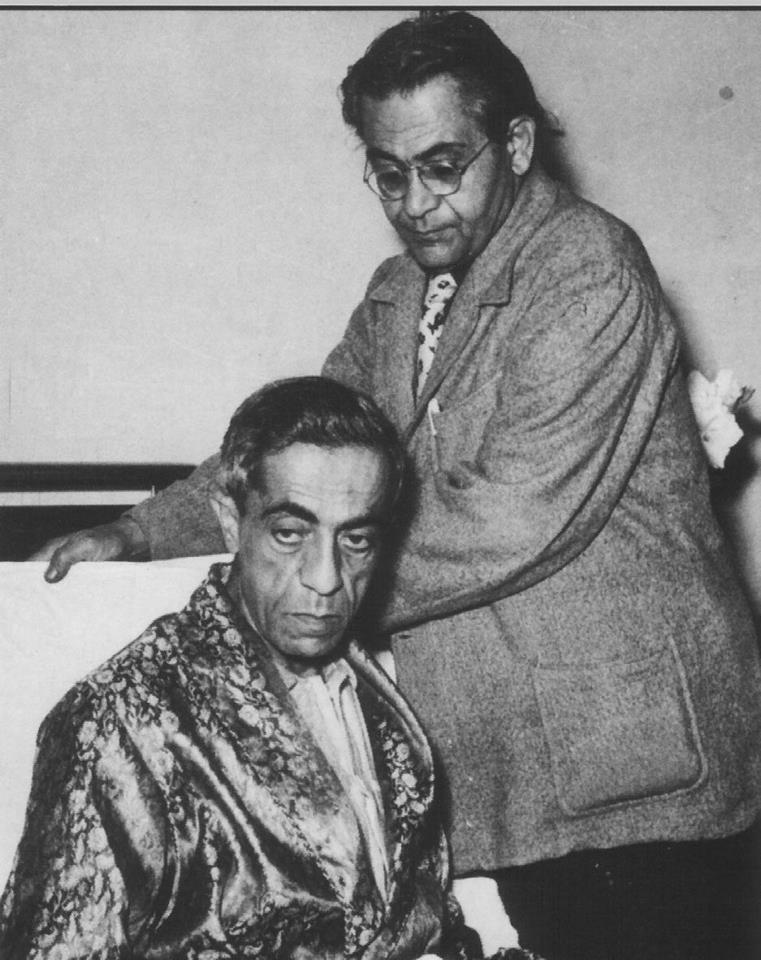
The Alexandria-born brothers, Seif and Adham Wanly, got introduced to the world of art through the stories of their French teachers during their school years. Like other pioneer artists, their parents preferred to see their sons pursue ‘serious’ studies. In 1925, and without their parent’s knowledge, the two brothers enrolled in art classes with an Italian painter, Otorino Bechhi, after realizing they could not afford to take classes with Arturo Zanieri, one of Mahmoud Said’s teachers.
For years, both brothers Seif (1906-1979) and Adham (1908-1959) would work as public sector employees to make ends meet while pursuing their love of making art. Seif’s mastery of a wide range of academic skills had become extraordinary by the end of their four-year course, though public recognition was slow to materialize. Their studio, rented for a symbolic amount in a building owned by Prince Youssef Kamal as a sign of support, became a cultural gathering space, where intellectuals, painters, and art-loving British soldiers would gather and exchange ideas and knowledge. This is when they got acquainted with and influenced the Barbizon School, an art movement towards emotional Realism.
In 1936, Seif would win the first prize in the Mokhtar Competition under the patronage of Hoda Shaarawi, a feminist and nationalist leader (1879-1947). In 1946, the arrival of Circus Toni in Alexandria would fascinate the brothers, who would sit for endless hours to sketch the jugglers, animals, and dancers with an impressive speed. Similarly, thanks to their cousin, who would become the director of the Cairo Opera house, they would visit the Opera to sketch the ballerinas, the theater, and the opera scenes.
In 1950, the brothers would have their first solo exhibition at Cairo’s Egyptian museum for modern art. Dubbed the ‘descendants of Degas” by a French journalist in 1956, the brothers would earn a lifetime prize from the newly founded Ministry of Culture in 1959 to dedicate themselves to their art solely, enabling them to resign from their jobs. Intent on pushing the boundaries of his artistic repertoire, Seif experimented with various styles, including impressionism, expressionism, realism, fauvism, and cubism, while infusing his work with metaphysical elements. It is estimated that Seif produced over three thousand paintings and over eighty thousand sketches during his lifetime.
Adham Wanly is always mentioned in connection with his brother, Seif, and indeed the two brothers were always together. Adham, though younger, is the one who signs himself Wanly. He has grabbed the family name for himself while Seif, the older, appears content to sign himself Seif. And this seems to be evidence of something — certain insecurity, perhaps, on the side of Adham; a degree of confidence on the part of the older Seif? He studied with his brother Seif Wanly at the Italian Artist Otorino Becchi from 1925 to 1929. He was a member of the teaching staff at the Faculty of Fine Arts in Alexandria from 1957 till his untimely death from lung cancer in 1959. Wanly was most famous for recording the life of the theatre and circus. He specialized in the ballet and opera featured in the Cairo Opera House and Mohamed Ali Theatre in Alexandria. These enchanting paintings and sketches were executed with impressive speed, rendering the human movements, no matter how fast these were, in great detail and energy. His ability to use the lights from the stage and on the faces of the dancers/singers show mastery and agility. While Seif Wanly broke with stylistic bounds in art, Adham remained faithful to his own world, expressive of what went on around him, especially the world of folk and classical dance, which held him spellbound and never lost its fascination. In 12 squared centimeters, Adham Wanly could sketch a crowded cocktail party, a full opera stage, or the detailed movement of a ballerina, as seen in this magnificent example. He was an extraordinary portrait artist and an unusually fine cartoonist. He had given the magazine Rose al-Youssef its special flavor through his drawings when it was first established. In 1960, the Museum of Fine Arts in Alexandria dedicated an exhaustive retrospective in his honor, exhibiting over 125 paintings.